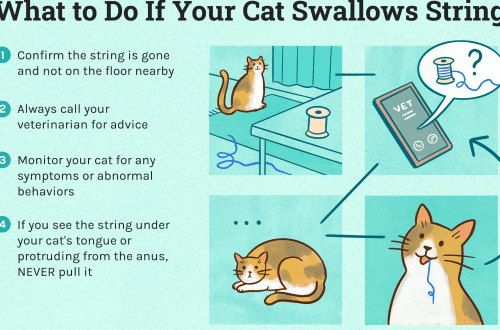
How to put a cat in a carrier?
Sometimes owners put off a trip to the veterinarian because getting their furry pet into a carrier is an impossible task. Perhaps the battle wounds had not yet completely healed from the last attempt to cope with the recalcitrant animal. It is understandable why not everyone wants to repeat this sad experience, but sometimes a pet really needs to see a doctor. How to transport a cat in a carrier and do it without stress?
Contents
Carry training for a cat

If the owners usually put the carrier in the far corner, then as soon as the time comes to get it, the cat will immediately guess that something “bad” is about to happen. If the pet only sees the carrier when it’s time to go to the veterinary clinic, she may become anxious. VetBabble recommends carrying your cat in the following ways:
- Wash and dry the carrier two weeks before the trip. From it should be sharp, unpleasant odors that the pet may not like.
- Place the carrier in a conspicuous place within reach of the cat. Leave the door open.
- To make the carrier look cozier, put a blanket, towel or cat bed in it. At the same time, it is desirable that they keep the smell of their mistress.
- Place your cat’s favorite toys and treats in the carrier.
- Place food and water bowls next to the carrier. When the animal feels more comfortable in the presence of the carrier, you can place the bowls directly inside.
These simple steps will help your pet form positive associations with this mode of transport. This will simplify the process of transporting the cat in the car if necessary. If the carrier is constantly in the pet’s field of vision, then its sudden appearance on the day of the appointment with the veterinarian will not cause an anxiety attack in the cat.
How to put an aggressive cat in a carrier
With proper preparation at the appointed hour, the pet may enter the carrier itself after some persuasion. On the other hand, a cat is always a cat. If she feels the desire of the owner to lure her into the carrier, this may be enough to discourage her from participating in such an event. To put a cat in a carrier if it is still resisting, you can do the following:
- put the carrier vertically so that the door is on top, and leave it open;
- carefully take the cat in your arms and wrap it in a towel, this will restrict its movements, but not much so that it is easy for her to breathe;
- quickly put the cat wrapped in a towel into the carrier and close the door; You can safely leave a towel inside.
Perhaps you should first put the carrier in a small room, such as the bathroom, and lock yourself there with the cat. Only then should these actions be performed.
If the animal does not accept the carrier in any way, another model can be used. Many pet stores offer carriers in the form of strollers and bags, and your pet may prefer to enter through the side door or top opening.
How to transport a cat without stress
If you need to take your cat to the vet, putting her in a carrier is only half the battle. Helping her not to worry during the car trip and stay in the clinic can also be difficult. How to calm an upset pet?
- Spray a towel or blanket with a synthetic cat pheromone spray. The litter should be placed in the cat carrier.
- Teach your pet to travel by car from childhood.
- Stay within the animal’s field of vision while moving. While it is safest to strap the carrier in the back seat, if possible, position it so that the cat can see its owner. Talk to her in a soothing voice during the trip.
If none of these tips help, and your furry pet is still experiencing severe anxiety, you should discuss the use of sedatives with your veterinarian.
How to remove a cat from a carrier

By the time the owner takes the pet to the doctor for an examination, it may already be sufficiently overexcited that it will require special efforts to remove it from the carrier. If the cat seems calm, talk to her in a soothing voice, let her sniff your fingers through the door before opening it.
Immediately after you open the carrier, put your hand on your pet’s head so that her muzzle looks in the opposite direction. Grab your body with your other hand, supporting your arm and forearm like a soccer ball. If she is slightly anxious or frightened, you may need to carefully take the cat by the neck and hold the front paws with your free hand so that it does not scratch.
It is advisable to ask a veterinarian or assistant to secure you when you pull the cat out of the carrier. Otherwise, you need to take out the cat as quickly and carefully as possible, and then gently press it to your body from the side with your elbow. If the baby is very frightened or shows aggression, you may need to wrap her in a towel again before removing her from the carrier.
Taking a cat to the vet safely can sometimes be a very daunting task. If the cat appears healthy, it may seem like regular trips to the clinic are more trouble than it’s worth. But cats are prone to a number of diseases, including various types of cancer, infections, urinary problems, and endocrine disorders, especially as they get older. Regular check-ups can help identify these diseases at an early stage and significantly improve your pet’s quality of life. A little preparation will help you avoid the bloody battles that occur every time it’s time for another visit to a specialist.





